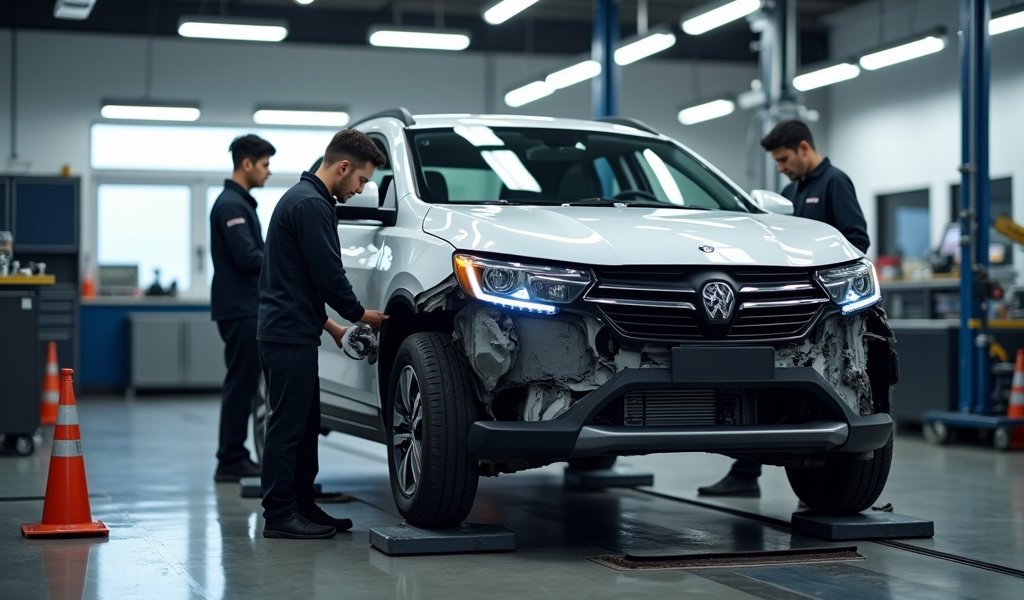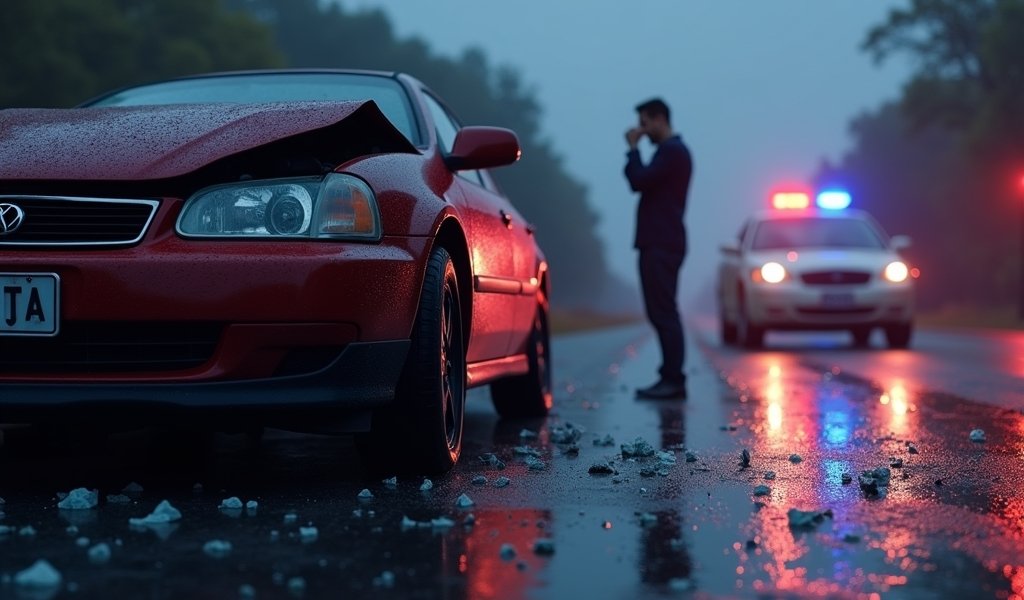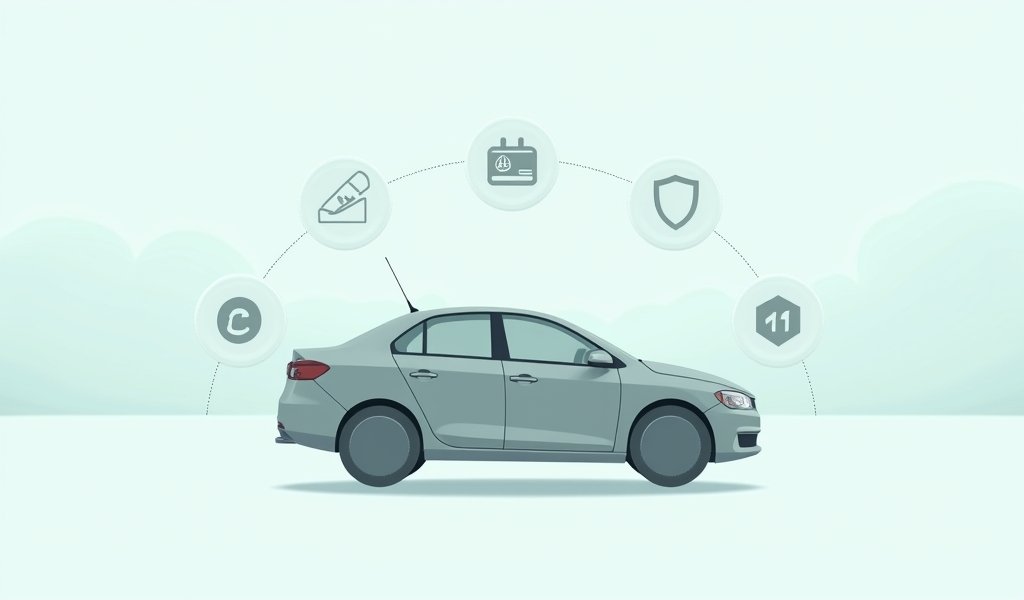Overview
This article outlines five essential steps to take after a car accident: ensure safety and check for injuries, contact authorities and document everything, exchange information with other parties, notify your insurance company, and seek medical attention even if you feel fine. Following these steps in order helps protect your physical, emotional, and financial well-being while creating the documentation needed for insurance claims and potential legal matters.
Table of Contents
- The Crucial First Steps After a Car Accident
- Step 1: Ensure Safety and Check for Injuries
- Step 2: Contact the Authorities and Document Everything
- Step 3: Exchange Information with Other Parties
- Step 4: Notify Your Insurance Company
- Step 5: Seek Medical Attention and Follow-up Care
- Conclusion
- Frequently Asked Questions
The Crucial First Steps After a Car Accident
Car accidents happen in the blink of an eye, leaving even the most prepared drivers shaken and uncertain. As an automotive professional with over 15 years of experience working with accident victims, I’ve witnessed firsthand how the steps to take after a car accident can significantly impact your safety, well-being, and financial recovery. Those first few minutes following a collision are crucial, and knowing exactly what to do can make all the difference.
The reality is that most drivers find themselves unprepared when the unexpected occurs. According to the National Highway Traffic Safety Administration, there are approximately 6 million car accidents annually in the United States. That’s why I’ve compiled this comprehensive guide to walk you through the five essential steps to take after a car accident—organized in the precise order you should follow them.
Whether you’re dealing with a minor fender bender or something more serious, these steps will help you navigate the aftermath with confidence and clarity. I’ll share practical insights from years in the field, including details that many basic guides miss. Let’s get started with the most important immediate actions to take following a collision.
Step 1: Ensure Safety and Check for Injuries
The moments immediately after impact are often disorienting. Your heart races, adrenaline surges, and your mind might struggle to process what just happened. Take a deep breath. Your first priority is safety—both yours and others involved in the accident.
If possible, move your vehicle to the shoulder or a safe location away from traffic. This reduces the risk of secondary collisions, which research from the Insurance Institute for Highway Safety shows account for nearly 20% of highway fatalities. Turn on your hazard lights to alert other drivers, and if you have them, set up warning triangles or flares—especially at night or in poor visibility conditions.
Next, check yourself for injuries. Even if you feel fine, be aware that adrenaline can mask pain. Move carefully and assess whether you have any cuts, bruises, or areas of discomfort. If you’re traveling with passengers, check on their condition as well, paying special attention to children who may not be able to articulate their injuries.
For the other parties involved, approach with caution and compassion. Ask if anyone needs immediate medical assistance. If someone is unconscious or complaining of neck or back pain, don’t move them unless they’re in immediate danger. Moving an injured person improperly can worsen spinal injuries.
Remember that safety comes first on your car accident checklist, and sometimes that means staying put. If your vehicle is unsafe to drive or positioned dangerously on a busy highway, it’s better to remain inside with your seatbelt on until emergency services arrive. Use your best judgment based on your specific situation.

Step 2: Contact the Authorities and Document Everything
Once you’ve addressed immediate safety concerns, it’s time to contact the proper authorities. In most cases, this means calling 911. Even for minor accidents, having an official police report can be invaluable for insurance claims and potential legal matters down the road.
When speaking with dispatch, provide clear information about your location, whether there are injuries, and if there are any hazardous conditions (like leaking fluids or blocked traffic lanes). Stay on the line until they tell you it’s okay to disconnect, as they might need additional information.
While waiting for police to arrive, start documenting everything. In today’s digital age, your smartphone is your best friend in these situations. Take comprehensive photos of:
- All vehicles involved, capturing damage from multiple angles
- The overall accident scene, including road conditions and weather
- Skid marks, debris, or other evidence that might disappear quickly
- Traffic signs or signals relevant to the accident
- Your injuries (if visible and you’re comfortable doing so)
Additionally, jot down notes about what happened while it’s fresh in your memory. Include the time of day, weather conditions, how the accident occurred from your perspective, and any statements made by other drivers. These details can fade surprisingly quickly in the stress of the moment.
When police arrive, provide a factual account of what happened without speculating or admitting fault. Even saying something like “I’m sorry” can be interpreted as an admission of guilt. Stick to the facts and avoid emotional statements. Request the officer’s name, badge number, and information on how to obtain a copy of the police report.
If police can’t come to the scene (which happens in some jurisdictions for minor accidents), you’ll need to file a report yourself at the nearest police station as soon as possible. Knowing who to call after a car accident beyond emergency services can also be helpful in these situations.
Step 3: Exchange Information with Other Parties
Exchanging information with other drivers involved in the accident is a critical step that needs to be handled with care. While you might be feeling shaken or even angry, try to remain courteous and business-like. Remember, this exchange isn’t about determining fault—it’s simply about gathering necessary information.
At minimum, you’ll need to collect the following from each driver involved:
- Full name and contact information (phone number, email, address)
- Insurance company name and policy number
- Driver’s license number and plate number
- Make, model, and year of the vehicle
- Location of the accident
Most insurance companies now offer mobile apps that can guide you through what information to exchange after a wreck, making this process more straightforward. If possible, take photos of the other driver’s license, registration, and insurance card rather than writing everything down—it’s faster and less prone to errors.
If there are witnesses to the accident, politely ask for their contact information as well. Independent witnesses can provide invaluable perspectives if there are disputes about how the accident occurred. Just a name and phone number is usually sufficient.
While interacting with other parties, be mindful of what you say. Avoid discussions about who was at fault, making apologies that could be interpreted as admitting liability, or making promises about how things will be handled. Even if you think you might have been at fault, determinations of liability are complex and should be left to insurance companies and legal professionals.
If the other driver becomes confrontational or aggressive, remove yourself from the situation if possible. Your safety is more important than completing the information exchange in that moment. Return to your vehicle, lock the doors, and wait for law enforcement if they haven’t already arrived.
Step 4: Notify Your Insurance Company
Once you’re safe and have gathered all necessary information, it’s time to contact your insurance company. Most insurers have 24/7 claims reporting lines, and many now offer convenient mobile apps for reporting accidents. The sooner you report the incident, the smoother the claims process will typically be.
When speaking with your insurance representative, provide a clear, factual account of what happened. Have your policy number ready along with all the information you’ve gathered from the scene. Be honest but stick to the facts—speculation about fault or causation isn’t necessary or helpful at this stage.
Your insurance company will guide you through their specific claims process, which typically includes:
- Assigning you a claim number and claims adjuster
- Explaining coverage details relevant to your situation
- Arranging for vehicle damage assessment
- Providing information about rental car coverage (if applicable)
- Discussing next steps and timeline expectations
Ask questions about anything that’s unclear, particularly regarding your deductible, coverage limits, and how to proceed with vehicle repairs. Make note of who you spoke with, when the conversation occurred, and what was discussed. This documentation can be valuable if there are any disputes later in the process.
If the accident involved another driver, their insurance company may also contact you. Be polite but cautious in these conversations. You’re not obligated to provide a recorded statement to the other driver’s insurance company, and in many cases, it’s advisable to consult with your own insurance company or an attorney before doing so.
Remember that insurance companies, even your own, are primarily concerned with managing costs. While many adjusters are genuinely helpful, it’s ultimately your responsibility to advocate for yourself and ensure you receive the coverage you’re entitled to under your policy.

Step 5: Seek Medical Attention and Follow-up Care
Even if you feel fine immediately after an accident, it’s crucial to monitor your health closely in the days and weeks that follow. Many injuries—particularly those involving soft tissue, whiplash, or mild concussions—may not be immediately apparent but can develop or worsen over time.
If you experience any of these symptoms following an accident, seek medical attention promptly:
- Headaches or dizziness
- Neck or shoulder pain and stiffness
- Back pain or reduced range of motion
- Numbness or tingling in extremities
- Changes in mood, memory, or concentration
- Sleep disturbances or unusual fatigue
- Abdominal pain or swelling
According to the CDC’s motor vehicle safety division, many accident-related injuries have delayed onset, sometimes appearing days or even weeks after the incident. This is why medical professionals often recommend a check-up even after seemingly minor collisions.
When you visit a healthcare provider, be sure to mention that you were in a car accident, even if your visit is days later. This helps them assess you appropriately and properly document the potential connection between your symptoms and the accident—documentation that may be important for insurance claims.
Follow your doctor’s treatment recommendations diligently and attend all follow-up appointments. This is important not only for your health but also for establishing a clear medical record if your injury claim is contested. Keep detailed records of all medical visits, treatments, prescriptions, and how your injuries affect your daily life.
Beyond physical injuries, be attentive to your mental health as well. Many accident victims experience anxiety, stress, or even post-traumatic stress symptoms, particularly when driving again. These psychological effects are real and valid—don’t hesitate to seek professional support if you’re struggling emotionally after an accident.
Conclusion
Navigating the aftermath of a car accident can feel overwhelming, but approaching it step by step makes the process manageable. To recap the essential steps to take after a car accident: ensure everyone’s safety, contact authorities and document everything, exchange information appropriately, notify your insurance company promptly, and seek medical attention even for seemingly minor injuries.
Remember that each of these steps serves a specific purpose in protecting your physical, emotional, and financial well-being after a collision. By following this guidance, you’ll be better positioned to recover fully from the incident and resolve any claims efficiently.
The moments following an accident are stressful, but they don’t have to be chaotic. Print this guide and keep it in your glove compartment alongside your insurance information and registration. Having a clear action plan ready before you need it provides peace of mind and ensures you won’t miss critical steps if an accident occurs.
While we hope you never need to use this information, being prepared is part of responsible vehicle ownership. Drive safely, stay alert, and remember that knowing the steps to take after a car accident is knowledge worth having—even if you never need to use it.
Frequently Asked Questions
Do I need to call the police for minor accidents with no injuries?
Yes, it’s generally advisable to call police even for minor accidents. A police report provides an official record that can be invaluable for insurance claims and prevents disputes about what happened.
How soon should I notify my insurance company after an accident?
Notify your insurance company as soon as possible, ideally within 24 hours. Most policies require “prompt reporting” and delays could potentially complicate your claim.
What if the other driver doesn’t have insurance?
Document everything, call the police, and contact your insurance company immediately. If you have uninsured motorist coverage, it will help protect you in this situation.
Should I see a doctor even if I feel fine after an accident?
Yes, many accident injuries don’t show symptoms immediately. A medical evaluation creates documentation of your condition and can detect issues before they become more serious.
Can I negotiate with insurance companies myself or should I hire an attorney?
For minor accidents with clear liability and minimal injuries, you can often handle claims yourself. For serious injuries, disputed liability, or significant damages, consulting an attorney is advisable.

